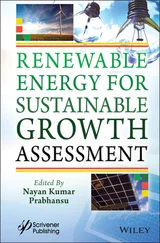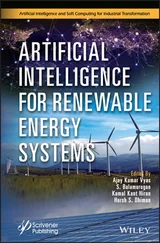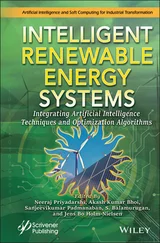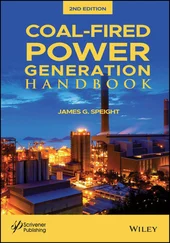James G. Speight - Encyclopedia of Renewable Energy
Здесь есть возможность читать онлайн «James G. Speight - Encyclopedia of Renewable Energy» — ознакомительный отрывок электронной книги совершенно бесплатно, а после прочтения отрывка купить полную версию. В некоторых случаях можно слушать аудио, скачать через торрент в формате fb2 и присутствует краткое содержание. Жанр: unrecognised, на английском языке. Описание произведения, (предисловие) а так же отзывы посетителей доступны на портале библиотеки ЛибКат.
- Название:Encyclopedia of Renewable Energy
- Автор:
- Жанр:
- Год:неизвестен
- ISBN:нет данных
- Рейтинг книги:3 / 5. Голосов: 1
-
Избранное:Добавить в избранное
- Отзывы:
-
Ваша оценка:
- 60
- 1
- 2
- 3
- 4
- 5
Encyclopedia of Renewable Energy: краткое содержание, описание и аннотация
Предлагаем к чтению аннотацию, описание, краткое содержание или предисловие (зависит от того, что написал сам автор книги «Encyclopedia of Renewable Energy»). Если вы не нашли необходимую информацию о книге — напишите в комментариях, мы постараемся отыскать её.
Written by a highly respected engineer and prolific author in the energy sector, this is the single most comprehensive, thorough, and up-to-date reference work on renewable energy.
Encyclopedia of Renewable Energy: Audience
Encyclopedia of Renewable Energy — читать онлайн ознакомительный отрывок
Ниже представлен текст книги, разбитый по страницам. Система сохранения места последней прочитанной страницы, позволяет с удобством читать онлайн бесплатно книгу «Encyclopedia of Renewable Energy», без необходимости каждый раз заново искать на чём Вы остановились. Поставьте закладку, и сможете в любой момент перейти на страницу, на которой закончили чтение.
Интервал:
Закладка:
Lignin is the final major constituent of plant material important to biomass processing, and it is a complex chemical compound that is most commonly derived from wood and is an integral part of the cell walls of plants. The chemical structure of lignin is unknown and, at best, can only be represented by a hypothetical formula, the veracity of which is questionable. In fact, lignin is one of most abundant organic compounds on earth after cellulose and chitin.
By way of clarification, chitin (C 8H 13O 5N)) nis a long-chain polymeric polysaccharide of ß-glucose that forms a hard, semitransparent material found throughout the natural world. Chitin is the main component of the cell walls of fungi and is also a major component of the exoskeletons of arthropods, such as the crustaceans (e.g., crab, lobster, and shrimp), and the insects (e.g., ants, beetles, and butterflies), and of the beaks of cephalopods (e.g., squids and octopuses).
Like hemicellulose, lignin is amorphous and more soluble than cellulose. It may be removed from wood by steaming or by dissolving in hot aqueous or aqueous bisulfite solution. Lignin resists hydrolysis and is resistant to microbial degradation.
Lignin fills the spaces in the cell wall between cellulose, hemicellulose, and pectin components and is covalently linked to hemicellulose. Lignin also forms covalent bonds to polysaccharides and thereby cross-links different plant polysaccharides. It confers mechanical strength to the cell wall (stabilizing the mature cell wall) and therefore the entire plant.
See also: Hemicellulose, Lignin, Starch.
Biomass Combustion
Combustion is widely used on various scales to convert biomass energy to heat and/or electricity with the help of a steam cycle (stoves, boilers, power plants). Production of heat, power, and (process) steam by means of combustion is applied for a wide variety of fuels, and from small scale (for domestic heating) to a scale in the range of 100 MWe. Co-combustion of biomass in (large and efficient) coal-fired power plants is an especially attractive option as well because of the high conversion efficiency of these plants. It is a proven technology, although further improvements in performance are still possible.
Net electrical efficiencies for biomass combustion power plants range from 20 to 40%. The higher efficiencies are obtained with systems over 100 MW eor when the biomass is co-combusted in coal-fired power plants.
See also: Biomass – Direct Combustion.
Biomass Composition and Properties
Biomass is a term used to describe any material of recent biological origin, including plant materials such as trees, grasses, agricultural crops, and even animal manure. The bulk composition (in terms of the amounts of cellulose, hemicellulose, and lignin) is, as might be expected variable opening upon the source and types of the biomass ( Table B-17).
Table B-17Bulk composition of different biomass type (% w/w, dry basis).
| Biomass type | Cellulose | Hemicellulose | Lignin |
|---|---|---|---|
| Peat | 10 | 32 | 44 |
| Rice husks | 30 | 25 | 12 |
| Straw (wheat) | 40 | 28 | 17 |
| Wood (bark) | 34 | 16 | 34 |
| Wood (hard) | 39 | 35 | 20 |
| Wood (soft) | 41 | 24 | 28 |
The elemental composition also shows some variation with the source of the biomass ( Table B-18).
Table B-18Elemental composition, ash production, and heat content of biomass types *.
| Biomass, % w/w** | C | H | N | O | Ash |
|---|---|---|---|---|---|
| Miscanthus | 49.5 | 6.2 | 0.6 | 43.7 | 3.3 |
| Peat | 53.1 | 5.5 | 1.3 | 38.1 | 5.6 |
| Reed grass | 49.4 | 6.3 | 1.6 | 42.7 | 8.8 |
| Straw (wheat) | 49.6 | 6.2 | 0.6 | 43.6 | 4.7 |
| Sugar cane | 49.5 | 6.2 | 0.5 | 43.8 | 3.7 |
| Wood (bark) | 47.2 | 5.6 | 0.3 | 46.9 | 3.9 |
| Wood (birch) | 48.8 | 6.0 | 0,5 | 44.2 | 0.5 |
| Wood (pine) | 49.3 | 6.0 | 0.5 | 44.2 | 0.5 |
| *Listed alphabetical rather than by any preference. **Dry basis |
The obvious data are those relating to the amount of oxygen in the biomass which will require (at some stage of the refining) a hydrodeoxygenation step.
In terms of the bulk composition, other biomass components, which are generally present in minor amounts, include (i) triglyceride derivatives, which are ester derivatives of glycerol three fatty acids, (ii) sterol derivatives, which are also known as steroid alcohol derivatives), (iii) alkaloid derivatives, which form a class of naturally occurring organic compounds that mostly contain basic nitrogen atoms, (iv) terpene derivatives, which are the primary constituents of the essential oils of many types of plants and flowers, (v) terpenoid derivatives, which are sometimes referred to as isoprenoids and form a large and diverse class of naturally occurring organic chemicals derived from terpenes – most are multicyclic structures with oxygen-containing functional groups), and (vi) wax derivatives, which are a diverse class of organic compounds that are lipophilic, malleable solids near ambient temperatures and include higher molecular weight alkane derivatives and lipids, typically with melting points above approximately 40°C (104°F) and melt to give low-viscosity liquids. Waxes are insoluble in water but soluble in organic, nonpolar solvents. Natural waxes of different types are produced by plants and animals and occur in crude oil).
This list (above) includes everything from primary sources of crops and residues harvested/collected directly from the land, to secondary sources such as sawmill residuals, to tertiary sources of post-consumer residuals that often end up in landfills. A fourth source, although not usually categorized as such, includes the gases that result from anaerobic digestion of animal manures or organic materials in landfills (Wright et al., 2006).
Thus, knowledge of the composition of a biomass feedstocks is critical to the selection of the varieties with optimized properties for downstream conversion (De Jong, 2014). This can be partially achieved by selecting varieties with biomass composition that are better suited to the conversion process. Lignocellulosic biomass displays considerable recalcitrance to biochemical conversion because of the inaccessibility of its polymer components to enzymatic digestion and the release or production of fermentation inhibitors during pretreatment. If the ratio of hemicellulose, cellulose, and lignin in a woody biomass feedstock was optimized for the specific biochemical conversion method, then the pretreatment methods could be reduced or avoided.
Plants use the light energy from the sun to convert water and carbon dioxide to sugar derivatives (photosynthesis) that can be stored within the plant system. Some plants, such as sugar cane and sugar beets, store energy as simple sugars, while other plants store the energy as more complex starch derivative. These plants include grains like corn which are prominent food sources. Another type of plant matter – cellulosic biomass – is composed of complex sugar polymers, and is not generally used as a food source. Cellulosic feedstocks under consideration for biofuels include (i) agricultural residues which is the leftover material from crops, such as the stalks, leaves, and husks of corn plants, (ii) forestry wastes, which include chips and sawdust from lumber mills, dead trees, and tree branches, (iii) municipal solid waste, which includes household garbage and paper products, (iv) food processing and other industrial wastes such as black liquor, which is a paper manufacturing by-product ( Table B-19), and (v) energy crops, such as fast-growing trees and grasses) developed just for this purpose.
Читать дальшеИнтервал:
Закладка:
Похожие книги на «Encyclopedia of Renewable Energy»
Представляем Вашему вниманию похожие книги на «Encyclopedia of Renewable Energy» списком для выбора. Мы отобрали схожую по названию и смыслу литературу в надежде предоставить читателям больше вариантов отыскать новые, интересные, ещё непрочитанные произведения.
Обсуждение, отзывы о книге «Encyclopedia of Renewable Energy» и просто собственные мнения читателей. Оставьте ваши комментарии, напишите, что Вы думаете о произведении, его смысле или главных героях. Укажите что конкретно понравилось, а что нет, и почему Вы так считаете.












